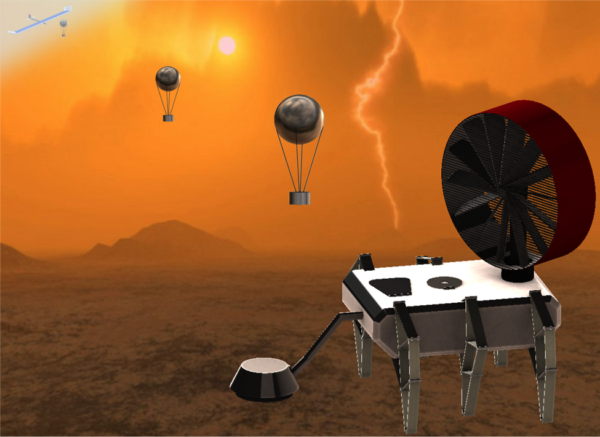Venus and Mars, Both Earthlike and Not So Earthlike
Throughout March, you can see a pair of planets in the evening sky which are both Earthlike and not so Earthlike. The bright point of light we’ve been enjoying each night recently is Venus. Often called Earths twin, because they are similar in size and density, have atmospheres and both have weather. But that weather is very different.
Yesterday March 5 marked the 35th anniversary of the Venus flyby and landing of the Soviet Union’s Venera 14 mission. That lander survived nearly 1 hour in surface temperatures of 869 degrees Fahrenheit and atmospheric pressures 94 times that of Earth. The orbiter maintained communication with the lander then transmitted data back to Earth.
If conditions are so bad on Venus that we cant get machines to survive there, humans won’t be visiting there anytime soon. Recent proposed Venus missions have taken a more steampunk approach where delicate electronics are replaced with hardened mechanical automata. In addition to solving the problem of moving around this inhospitable environment, some scientific measurements are possible. How to get the data recorded back to Earth remains a challenge, however.

Ancient mechanical computers built with modern manufacturing technology creates a rover design free from electronics, enabling exploration of the most extreme environments in the solar system. (Credit: NASA/JPL, ESA)
Above and to the left of Venus you’ll find an orange spot of light, that’s Mars. While Mars is about half the size of Earth, it is still arguably more Earth’s twin, at least from a survivability point of view. Both also have atmospheres and weather.
The last report from the Mars rover Curiosity via the @marswxreport twitter feed had a high of 17ºF and a low of -97ºF. Pressure is just 8.36 hPa about half a percent of the atmospheric pressures we see here on Earth. There’s not a lot of atmosphere left on Mars, which presents a challenge to astronauts. However, our robotic scouts like Curiosity have also found valuable resources for sustaining human pioneers, such as water ice just below the surface.
Still settling another planet will require independence from Earth and its resources. We may curse severe weather here on Earth but will miss it as we venture beyond.
Category: ALL POSTS, Spacey Stuff


















